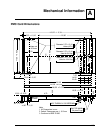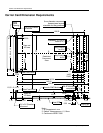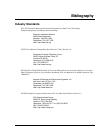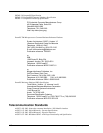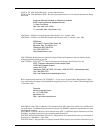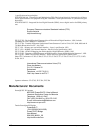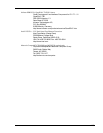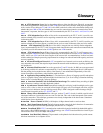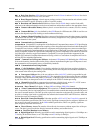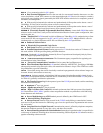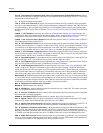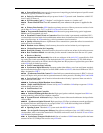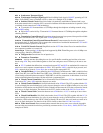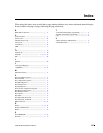
Glossary
4538 Hardware Reference Manual 123
DSX1 Cross-connection point for DS1 signals.
DTE Data Terminal Equipment Device at the user end of a user-network interface that serves as a data
source, destination, or both. DTE connects to a data network through a DCE device (for example, a modem)
and typically uses clocking signals generated by the DCE. DTE includes such devices as computers, protocol
translators, and multiplexers.
E1 Wide-area digital transmission scheme used predominantly in Europe that carries data at a rate of
2.048 Mbps. E1 lines can be leased for private use from common carriers.
E3 Wide-area digital transmission scheme used predominantly in Europe that carries data at a rate of
34.368 Mbps. E3 lines can be leased for private use from common carriers.
EEPROM Electrically Erasable Programmable Read-Only Memory A nonvolatile PROM that can be
written as well as read form. Usually used to hold information about the current system configuration, alter-
nate boot paths, etc.
ELAN Emulated LAN ATM network in which an Ethernet or Token Ring LAN is emulated using a client-
server model. ELANs are composed of an LEC, an LES, a BUS, and an LECS. Multiple ELANs can exist
simultaneously on a single ATM network. ELANs are defined by the LANE specification.
END Enhanced Network Driver
EPLD Electrically Programmable Logic Device
ES End System Generally, an end-user device on a network.
ESF Extended Superframe Format Framing type used on T1 circuits that consists of 24 frames of 192
bits each, with the 193rd bit providing timing and other functions.
Ethernet Baseband LAN specification invented by Xerox Corporation and developed jointly by Xerox,
Intel, and Digital Equipment Corporation.
FCC Federal Communications Commission The Government agency responsible for regulating tele-
communications in the United States.
FCC Fast serial Communication Controllers Used to control the fast Ethernet port.
FDDI Fiber Distributed Data Interface LAN standard, defined by ANSI X3T9.5, specifying a 100-Mbps
token-passing network using fiber-optic cable, with transmission distances of up to 2 km. FDDI uses a dual-
ring architecture to provide redundancy.
Flash Nonvolatile storage that can be electrically erased and reprogrammed so that software images can
be stored, booted, and rewritten as necessary.
Frame Relay Industry-standard, switched data link layer protocol that handles multiple virtual circuits
using HDLC encapsulation between connected devices. Frame Relay is more efficient than X.25, the protocol
for which it is generally considered a replacement.
FTP File Transfer Protocol Application protocol, part of the TCP/IP protocol stack, used for transferring
files between network nodes.
GB GigaBytes 10
9
bytes per second.
Gbps Gigabits per second 10
9
bits per second.
HDLC High-Level Data Link Control Bit-oriented synchronous data link layer protocol developed by
ISO. Derived from SDLC, HDLC specifies a data encapsulation method on synchronous serial links using
frame characters and checksums.
IMA Inverse Multiplexing over ATM Standard protocol defined by the ATM Forum in 1997.
IMMR Internal Memory Map Register
IP Internet Protocol Network layer protocol in the TCP/IP stack offering a connectionless internet-
work service. IP provides features for addressing, type-of-service specification, fragmentation and reassem-
bly, and security.
ISDN Integrated Services Digital Network Communication protocol, offered by telephone companies,
that permits telephone networks to carry data, voice, and other source traffic.
ISO International Organization for Standardization International organization that is responsible for
a wide range of standards, including those relevant to networking. ISO developed the OSI reference model, a
popular networking reference model.




